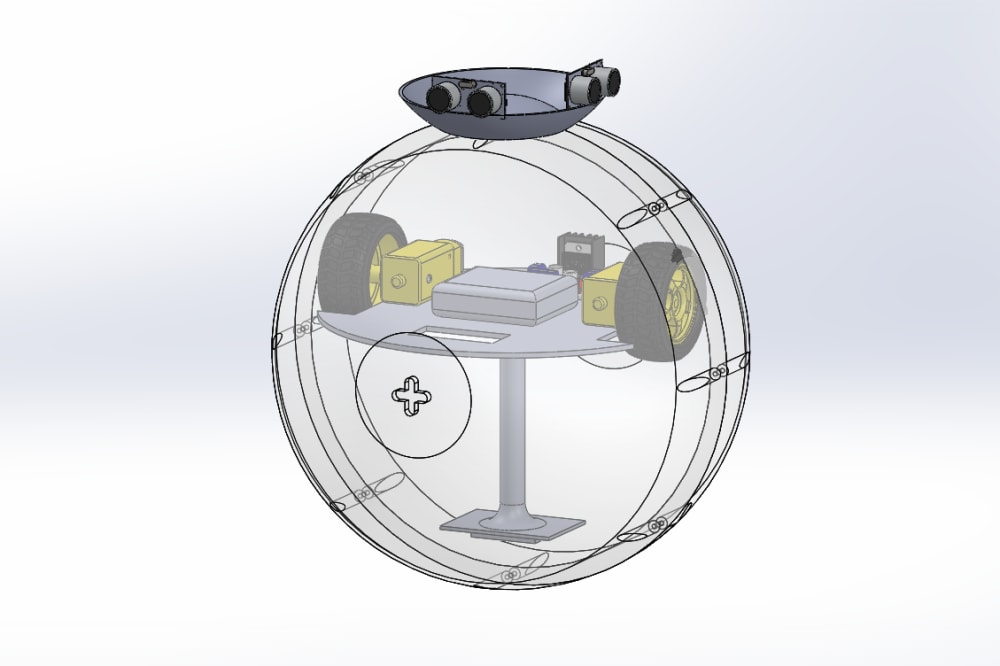Rudra is a smart health assistant spherical mobile robot capable of indoor navigation with applications in hospital floors or at homes. The purpose of Rudra is to customize to a human's needs. With the ability to follow the specified human and look out for any obstacles, Rudra can assist the visually impaired and prevent any injuries. It has medical applications which allow integration of unique sensors to monitor the patient's health in absence of a medical professional or family members.
Rudra's main goal is to be a constant companion to the human when someone else is not available to take care of them or talk to them. Rudra reminds the human to eat, drink and take medicine when necessary and has the ability to have complex conversations, keeping the human entertained. Emergency features also allow Rudra to raise alarm in necessary situations and instantly contact the relatives or medical staff to seek out help if the human is not able to.
In case of being away from a loved one, Rudra can act as a stand in to watch out for them. It can be remotely controlled if necessary and the daily intake of water and calories can also be examined.
Rudra is designed in spherical shape and a comfortable size (25 cm) to avoid the robot beign a tripping hazard. Spherical robots have several advantages, including low friction locomotion resulting in smoothness of movement, more compatibility, omnidirectional motion and no chances of overturning in any situation.
The current physical design and testing for Rudra has been carried out using Solidworks, and the following softwares/hardwares are being used for technical developments:
- Raspberry Pi 3: brain of Rudra
- Computer Vision: Yolo algorithm for object and human detection
- AWS Lex: Rudra voice assistant
- ESP32: WiFi module+Indoor Positioning System (IPS)
- Figma: Development of UI for Rudra Companion app
- Flutter: Android companion app (with remote control and monitoring facilities)
Rudra is currently in the prototype development phase, with a head start towards 3D printing/purchase of the required components. Our team is currently self-funded by the members and we use open source tools for building the robot.
There are several assistive technologies currently available in the market with a lot of distributed functions like fitness bands for health monitoring, apps with ML technologies having chatting abilities and other such facilities. There is also a new class of pet robots currently being used for commercial toy purposes, but most of them lack mobility. Rudra combines all the great aspects of these technologies and delivers them in one package.
As an ecosystem, Rudra is implementable at a large scale in any indoor environment - be it a hospital or a home, while providing the utmost privacy.
Currently, taking into account the price of all open source hardware components available in market for building the prototype, the cost of manufacturing comes down to $190 (Rs. 15000). For large scale production, this cost can be cut down by purchase of custom-built hardware.
Like this entry?
-
About the Entrant
- Name:Sukritee Sharma
- Type of entry:teamTeam members:Srishti Agrawal, Sukritee Sharma
- Software used for this entry:Solidworks
- Patent status:none

